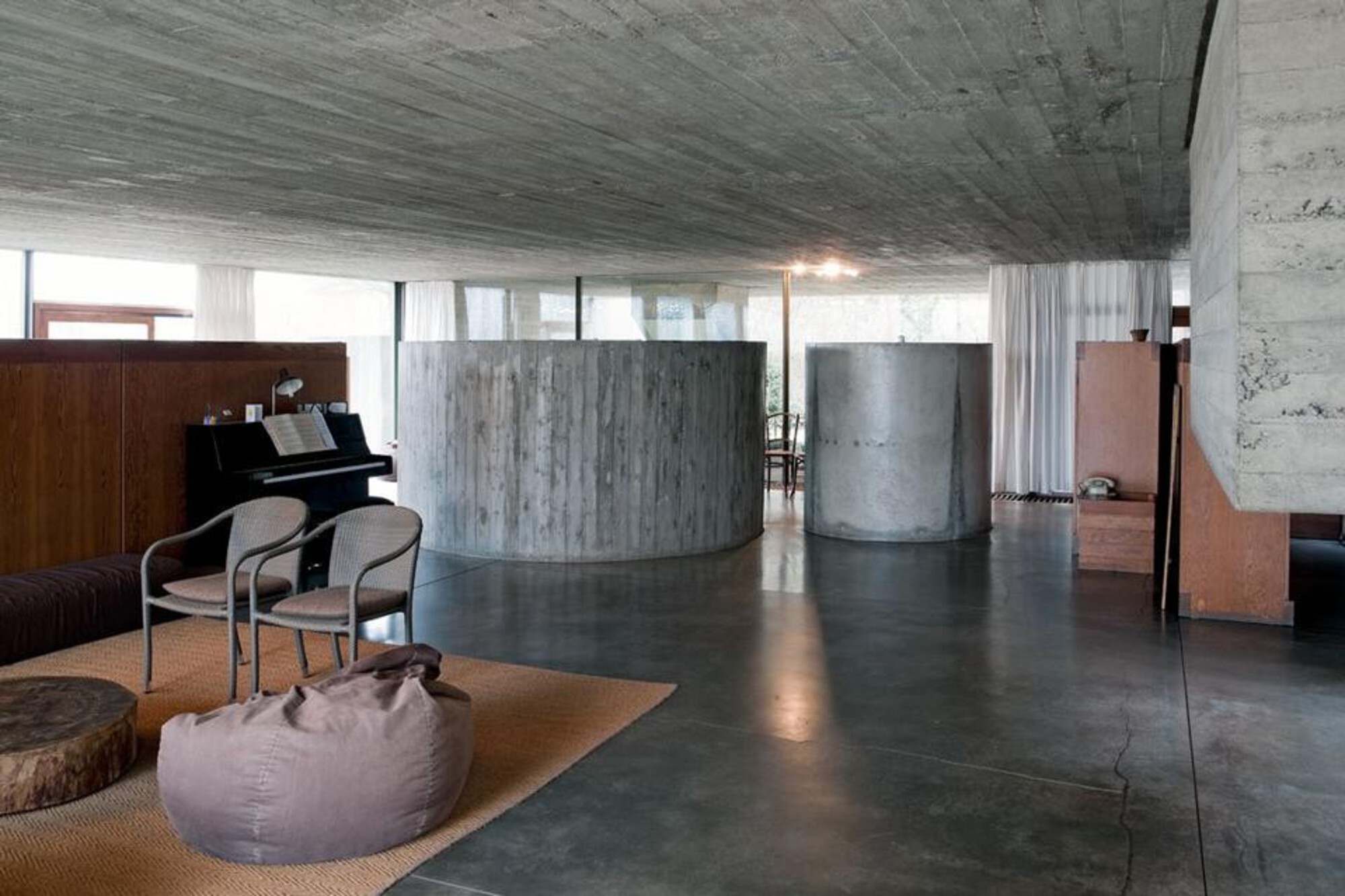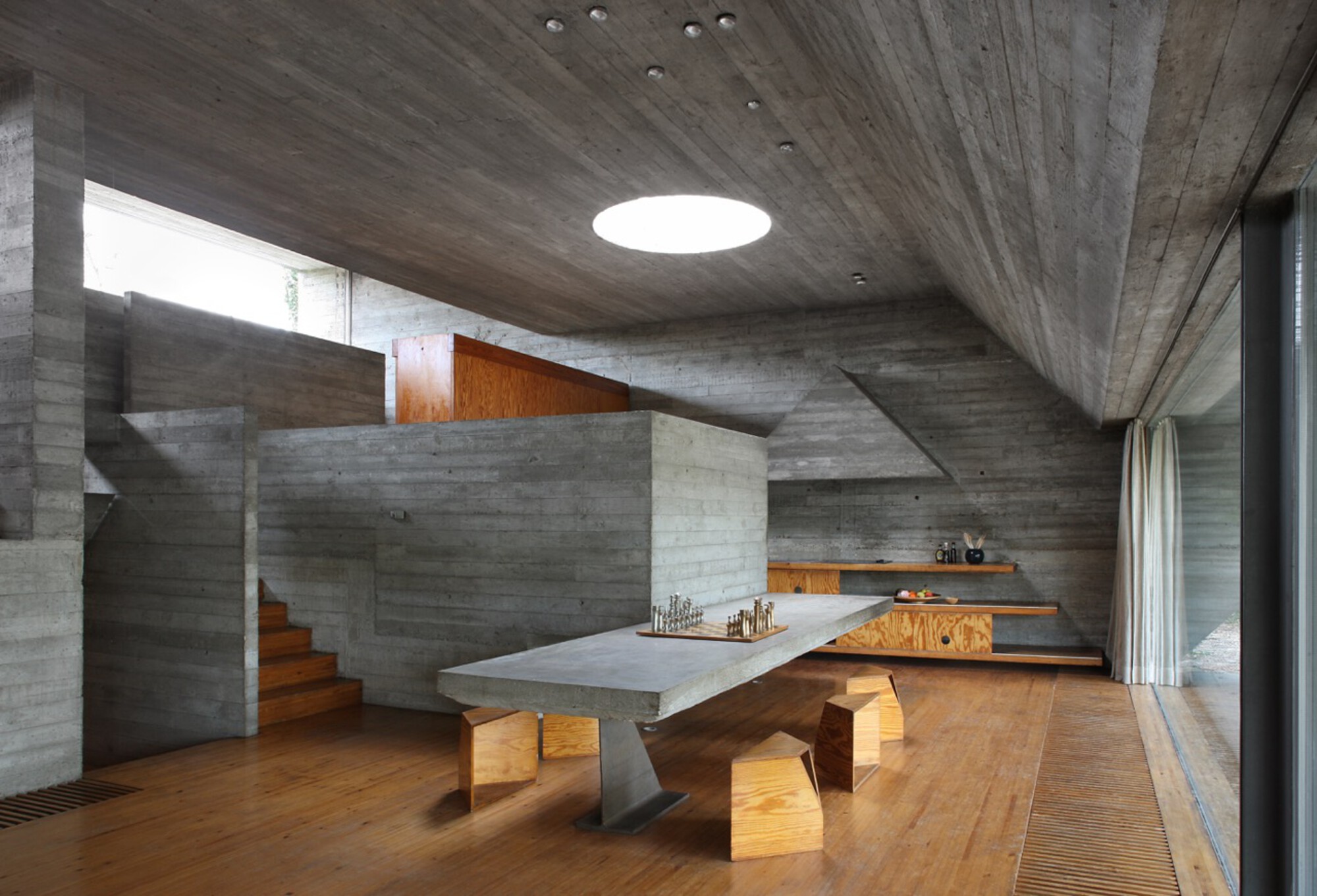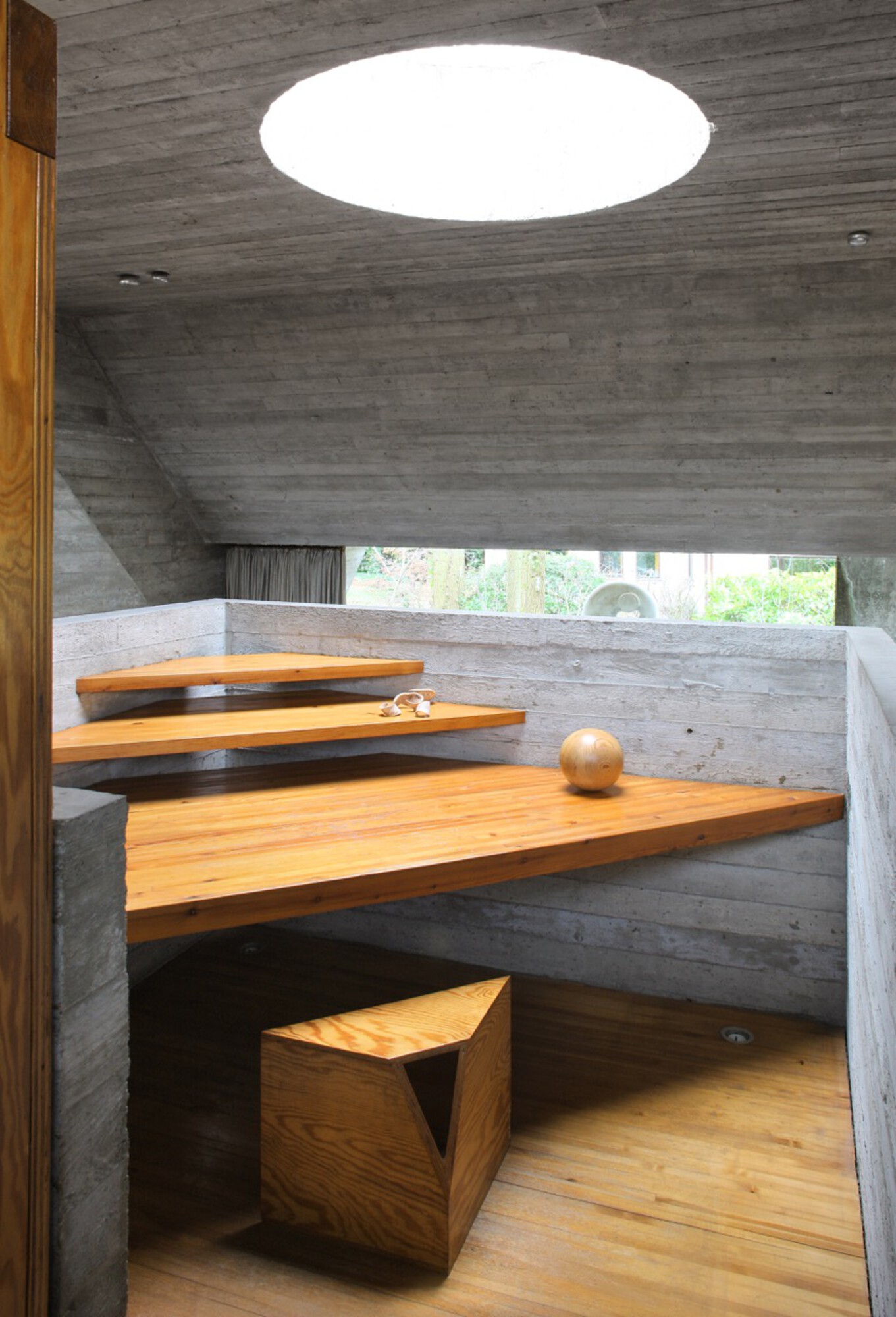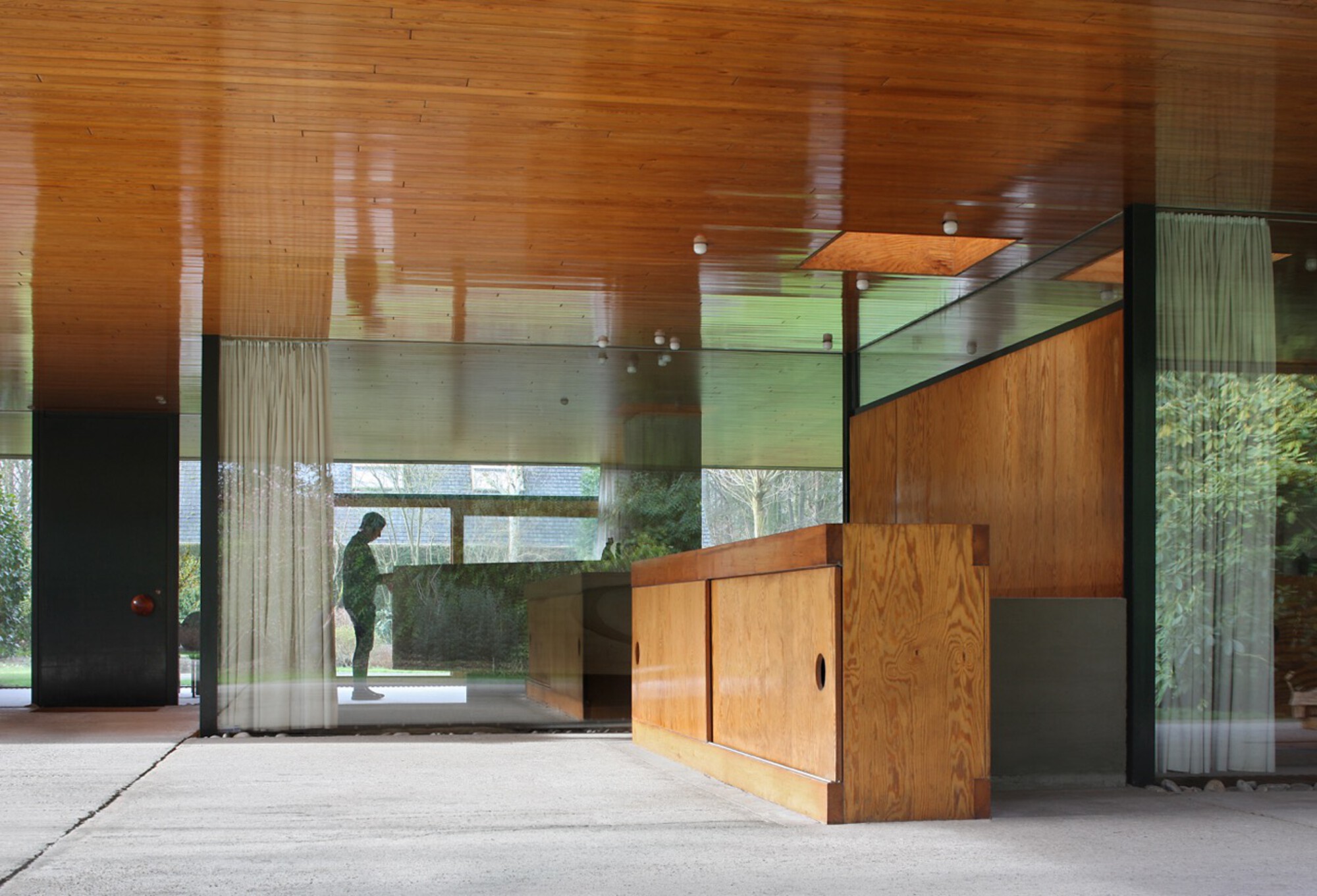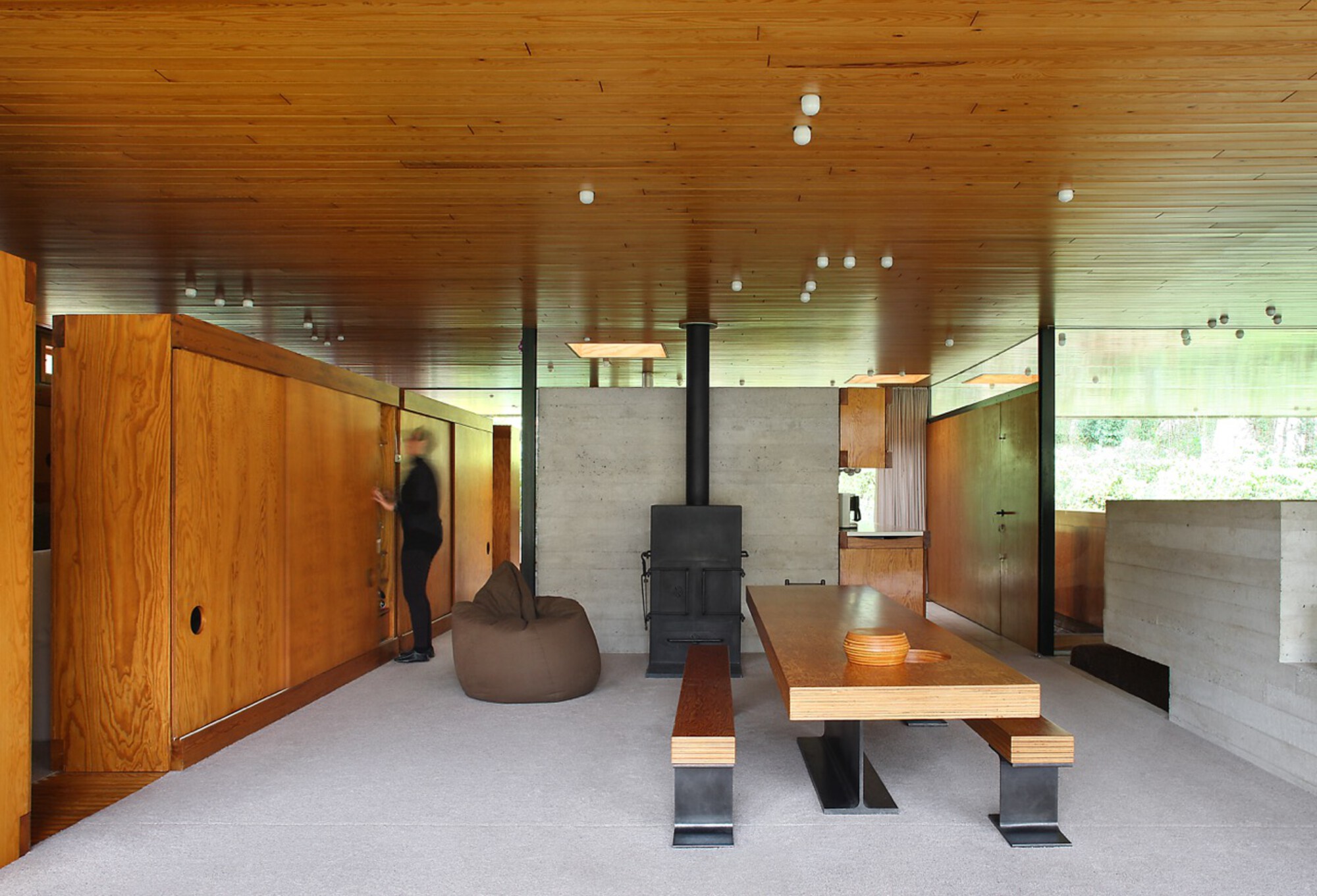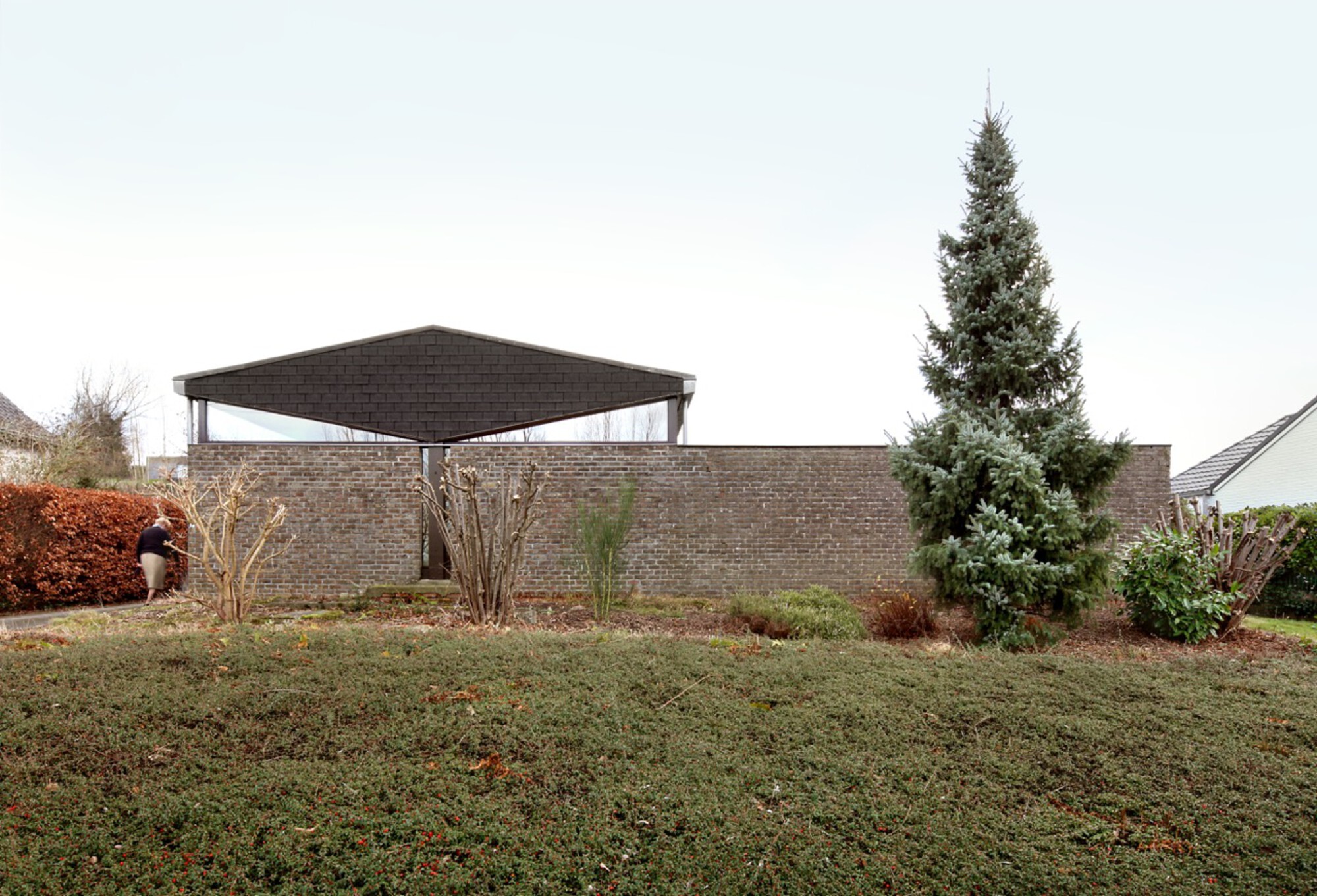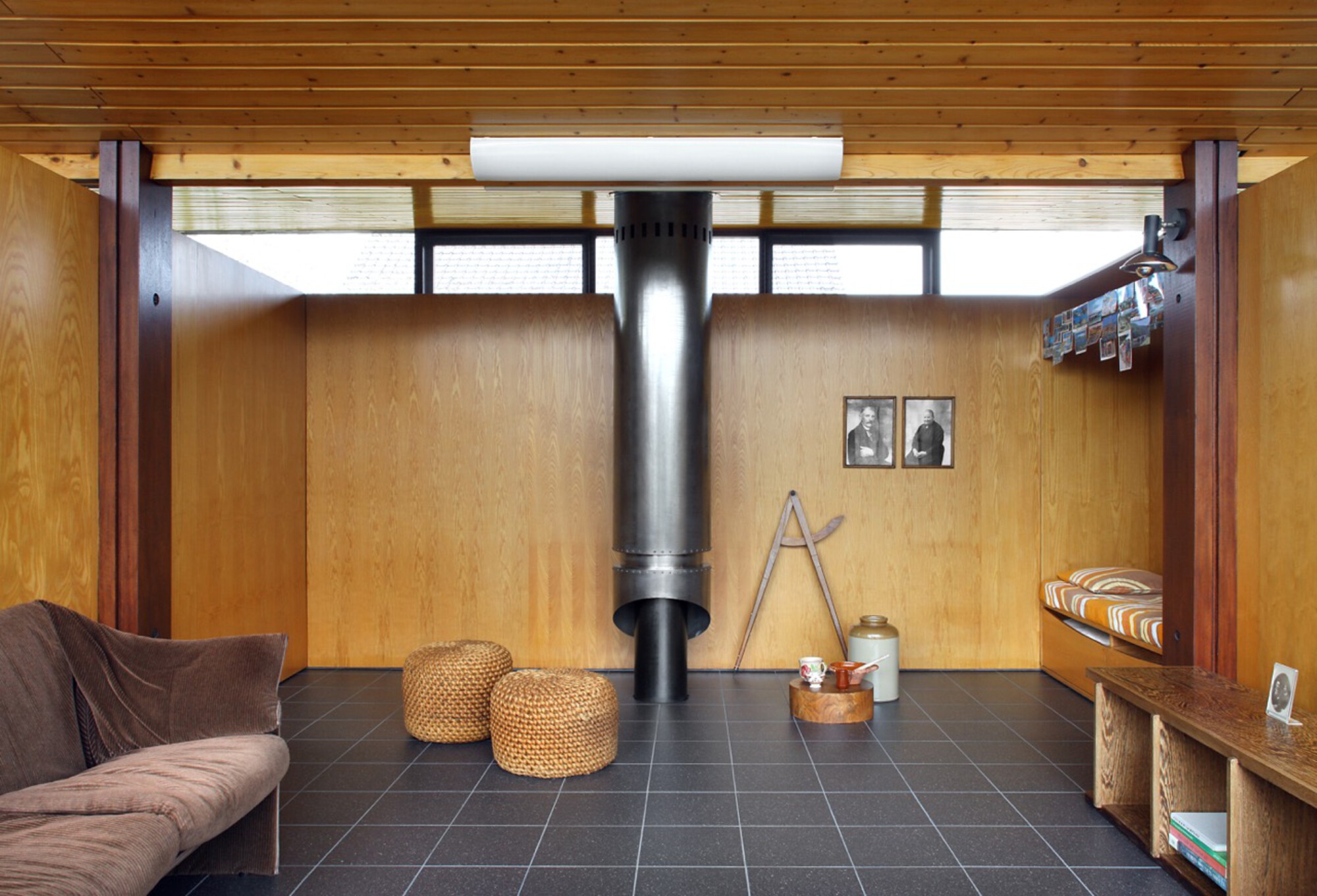Juliaan Lampens
Juliaan Lampens was born in 1926 in De Pinte, near Ghent, Belgium. He founded his own architectural practice in Eke in 1950 after studying art at the Higher Institute for Art and Vocational Training of the Sint-Lucas School in Gent. Juliaan Lampens was mainly active in East Flanders. The Chapel of Kerselare (Oudenaarde, 1966), House Vandenhaute – Kiebooms (Zingem, 1967) and House Van Wassenhove (Deurle, 1972 – 1974) are considered to be his absolute masterpieces.
The architecture of Juliaan Lampens goes beyond conventional living and is instead suggestive of the utopist avant-garde of living without barriers. In 1950, the architect set up his own business in Belgium, in the village of Eke on the outskirts of Ghent. Having been profoundly influenced by his experience of the 1958 Brussels World’s Fair, Lampens subsequently made a radical change of course and built his own house in 1960, which represented a major turning point in his career.
Lampens worked almost exclusively with concrete, wood and glass. Formally, his homes were designed to showcase an interior and exterior harmony with their surrounding environment and nature. Borders, cardinal orientation and lines of sight were all central to the placement and construction of the home. Typically, Lampens’s houses are closed to the public on one side but are otherwise completely open to nature, with the result that there is always a formal exchange between transparency and closure.
He constantly tried to reach an absolute reconciliation in the antagonism between Le Corbusier’s whimsy and Mies van der Rohe’s control. He also had deep admiration for Oscar Niemeyer, Romanesque architecture and the bunkers along the Atlantic Wall. For Lampens, these constructions on the Atlantic coast constituted the most beautiful examples of brutalism. Though not directly associated with brutalism, the architecture of Juliaan Lampens stands as a significant variant of this style: materially in his use of raw concrete, and formally in his deployment of the bunker typology. For some time he experimented with raw concrete in order to develop his style of bunker-like exteriors combined with open vistas and sculptural motifs.
Lampens’s idea of living was based on various features to form a complete open plan without pillars or even walls, and all the rooms were placed so they seemingly conjoined with each other (kitchen, living room, bedrooms and bathroom all in one open space). Unlike the bourgeois insistence on individuality and patriarchy, this style privileges community and equality within the living space while focusing on life together as a family unit as a way of returning to a more basic way of living.
Some architects gain rapid international acclaim, while others are only acknowledged much later in their careers. The work of Juliaan Lampens gained international attention only in 2010, thanks to the publication ‘Juliaan Lampens’, edited by Angélique Campens and with photos by Jan Kempenaers. Before, the work of the ‘fotgotten architect’ was only known in Belgium. In 1991, a retrospective took place at arts centre deSingel in Antwerp. He was awarded the Belgian Award for Architecture in 1995. In 2014 however, the prominent Japanese architecture magazine A+U published a special edition on Juliaan Lampens. It shows the increasing international interest in his work.
A fundamentalist vision of living, A shift of perception – text by Angélique Campens, in Domus June 2010
The Bold and the Brutalist – text by Sam Steverlinck, in DAMN°58



